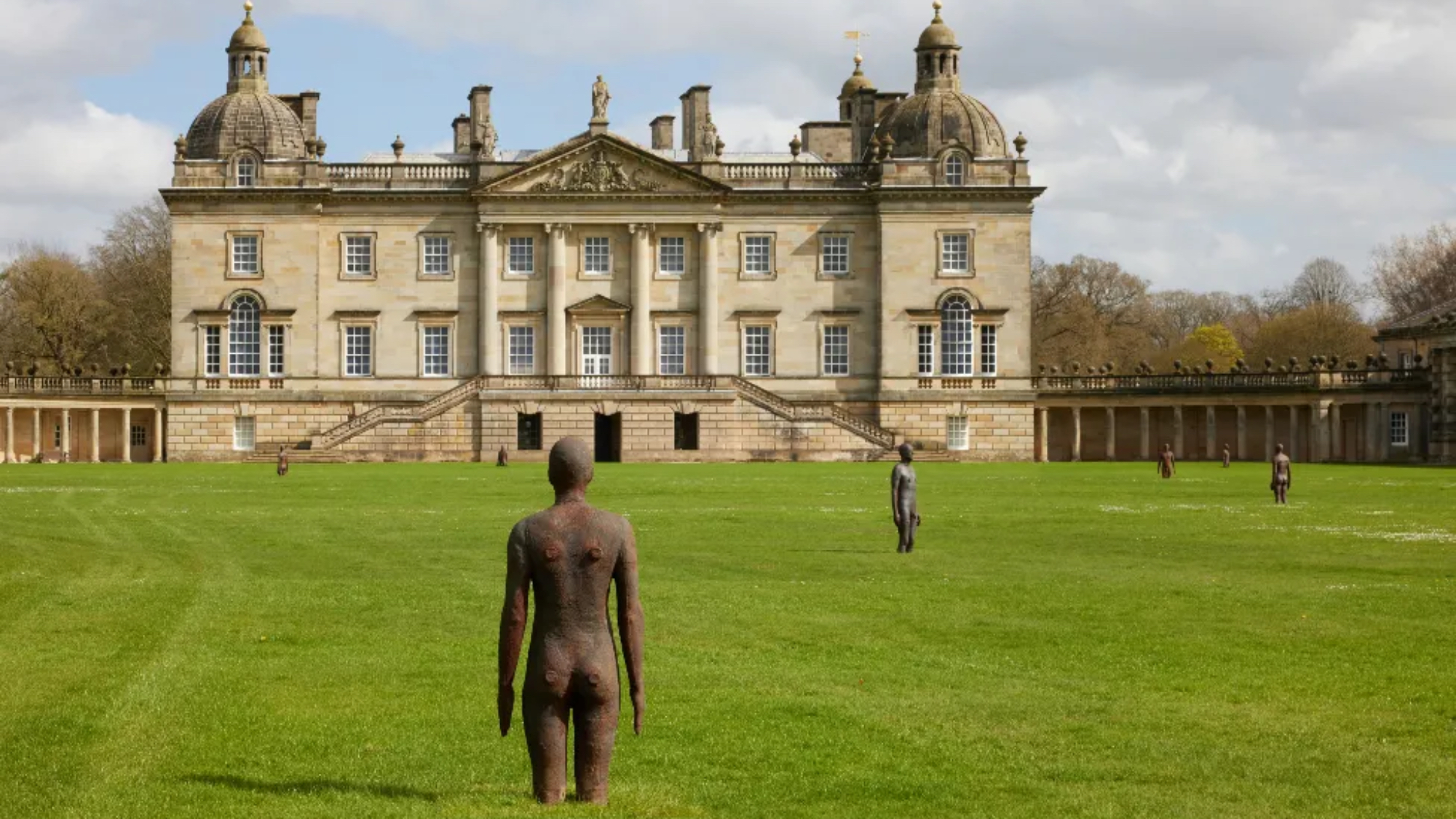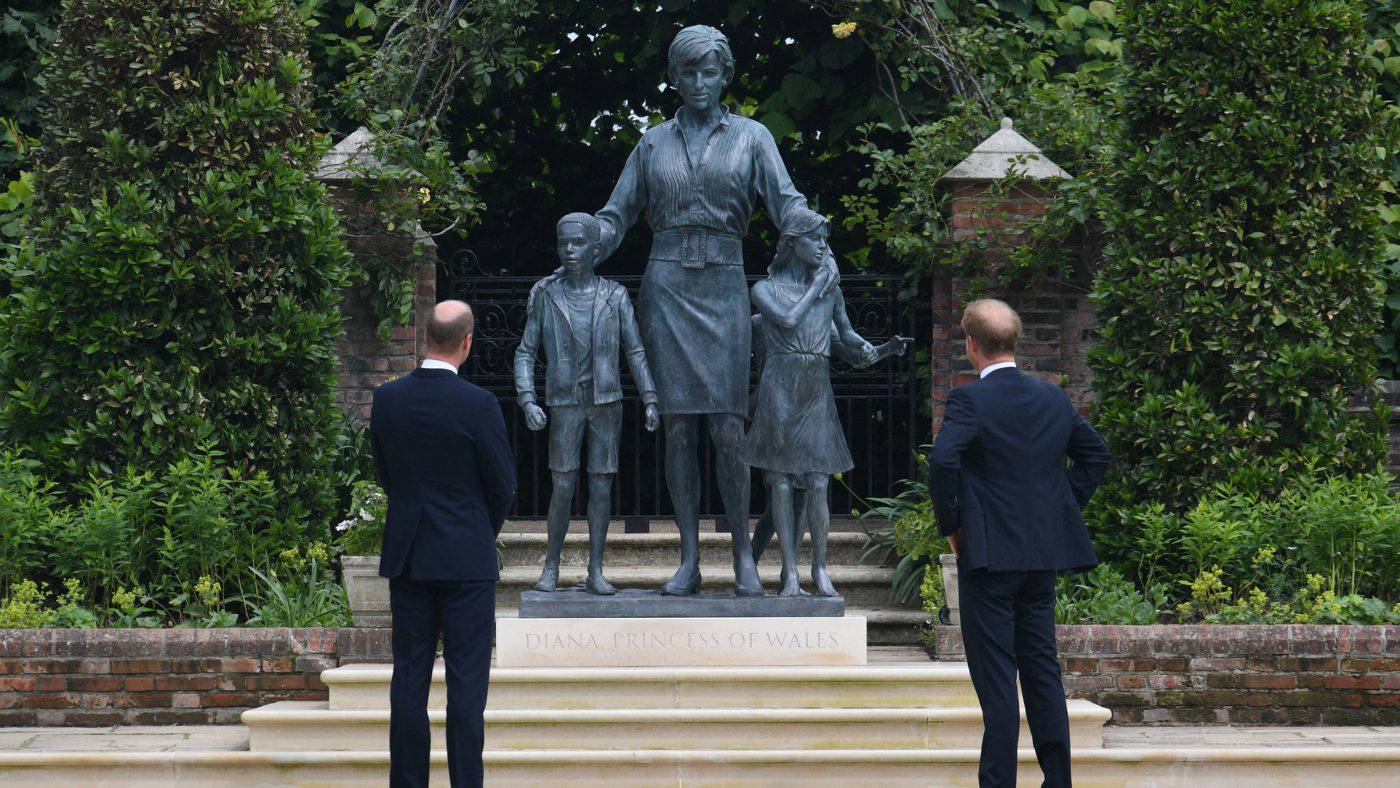Trafalgar Square sculpture: what is the meaning of Gift Horse?
Memento mori, anti-capitalist statement or just bad art – five interpretations of the fourth plinth's horse skeleton

A new sculpture called the Gift Horse has been unveiled on Trafalgar Square's Fourth Plinth. The bronze, by German artist Hans Haacke, is a sculpture of a horse skeleton adorned with a ribbon that displays a live feed from the London Stock Exchange.
The work is the tenth piece of public art to appear on the plinth and replaces a giant blue cockerel, which stood in the spot for 18 months. But while convention cautions against looking a gift horse in the mouth, it hasn't stopped commentators arguing and speculating about what the sculpture means. Here are five interpretations:
An Invitation The BBC reports that the artist, Haacke, 78, was inspired by an engraving of the anatomy of a horse by English painter George Stubbs, whose works are on display at the National Gallery, also on Trafalgar Square. But Haacke was reluctant to specify what the sculpture was trying to say. "It is an invitation to make connections," he told the BBC, "but I would not like to give directions. I'm sure there will be a diversity of responses."
The Week
Escape your echo chamber. Get the facts behind the news, plus analysis from multiple perspectives.

Sign up for The Week's Free Newsletters
From our morning news briefing to a weekly Good News Newsletter, get the best of The Week delivered directly to your inbox.
From our morning news briefing to a weekly Good News Newsletter, get the best of The Week delivered directly to your inbox.
Anti-austerity or pro-infrastructure? London Mayor Boris Johnson, who presided over the unveiling, called the work "a startlingly original comment on the relationship between art and commerce". He went on to say that there will be those who say the "undeniably unfed, emaciated quadruped is a warning, a memento mori, a symbol of the pursuit of austerity and the George Osborne diet approach to life". But in a tongue-in-cheek speech he said that the tubular structures of the sculpture "symbolised the vital infrastructure – the Tube – that must run beneath the surface of any great and beautiful city" and celebrated the sustained investment in that infrastructure.
Politicians Appropriating Culture The Guardian art critic Adrian Searle rejected Johnson's interpretation as "vulgar and somewhat dismissive", saying the work resists interpretation. Nevertheless, he put forth his own view that the work is "against forgetting", and highlights "the dangers of politicians appropriating culture". Searle notes that the horse "looks out on the square with empty eye sockets and a skeletal grin, while the money goes round and round and the people talk".
Power and money The director of the Tate gallery, Nicholas Serota had yet another interpretation. He told Channel 4: "I think it's clearly about the fragility of power systems and the state, and the financial systems." Ekow Eshun, the culture commentator and former director of the ICA who chaired the selection committee, agreed. He told the Evening Standard that the work was a "comment on the connections between power, money and history which go to the heart of what London is as a city".
Cringe-worthy anti-capitalism In The Spectator, Digby Warde-Aldam says the sculpture is "hardly Henry Moore, but it's OK as public art goes", until you notice the strip of stockmarket ticker-tape tied in a bow around its leg. This one flourish, says Warde-Aldam, tells us the work is meant to be "a serious comment on the state of things" and that "capitalism is bad". It turns the Gift Horse from the decent side of mediocre to the plain embarrassing, he says, whacking you over the head with symbolism. It's cringe-worthy, he says, "but at least it's not David Shrigley".
A free daily email with the biggest news stories of the day – and the best features from TheWeek.com
Shrigley's work, Really Good, a sculpture of a hand with an enlarged thumb, is due to appear on the plinth next year.
-
 How to financially prepare for divorce
How to financially prepare for divorceThe Explainer Facing ‘irreconcilable differences’ does not have to be financially devastating
-
 Why it’s important to shop around for a mortgage and what to look for
Why it’s important to shop around for a mortgage and what to look forThe Explainer You can save big by comparing different mortgage offers
-
 4 ways to save on rising health care costs
4 ways to save on rising health care costsThe Explainer Health care expenses are part of an overall increase in the cost of living for Americans
-
 Nnela Kalu’s historic Turner Prize win
Nnela Kalu’s historic Turner Prize winTalking Point Glasgow-born artist is first person with a learning disability to win Britain’s biggest art prize
-
 Denmark's 'pornographic' mermaid statue is in hot water
Denmark's 'pornographic' mermaid statue is in hot waterUnder the Radar Town will reportedly remove voluptuous Big Mermaid, despite statue being 'arguably a bit less naked' than Copenhagen monument the Little Mermaid
-
 Myth and Marble: Ancient Roman Sculpture From the Torlonia Collection
Myth and Marble: Ancient Roman Sculpture From the Torlonia CollectionFeature The private collection is being revealed to the public for the first time in decades
-
 Marc Quinn's Light into Life: an 'al fresco treasure-hunt' of sculpture at Kew
Marc Quinn's Light into Life: an 'al fresco treasure-hunt' of sculpture at KewThe Week Recommends Massive metallic sculptures dotted across the gardens explore 'links between nature and humanity'
-
 Antony Gormley's Time Horizon – a 'judgmental army' of 100 cast-iron men
Antony Gormley's Time Horizon – a 'judgmental army' of 100 cast-iron menThe Week Recommends Sculptures are 'everymen questioning the privilege of their surroundings' at the Norfolk stately home
-
 Rome's Colossus of Constantine
Rome's Colossus of ConstantineIn the Spotlight British artist digitally reconstructs original from remaining fragments to create new statue of Roman emperor
-
 ‘The Embrace’ Martin Luther King sculpture: ‘beautiful monument’ or ‘weirdly sexualised blob’?
‘The Embrace’ Martin Luther King sculpture: ‘beautiful monument’ or ‘weirdly sexualised blob’?Talking Point Relatives of the civil rights hero and his wife Coretta Scott King are among critics locking horns after $10m artwork unveiled in Boston
-
 The verdict on the Kensington Palace Princess Diana statue
The verdict on the Kensington Palace Princess Diana statueThe Week Recommends ‘Could it be that Laura Ashley has made it on to a public monument?’